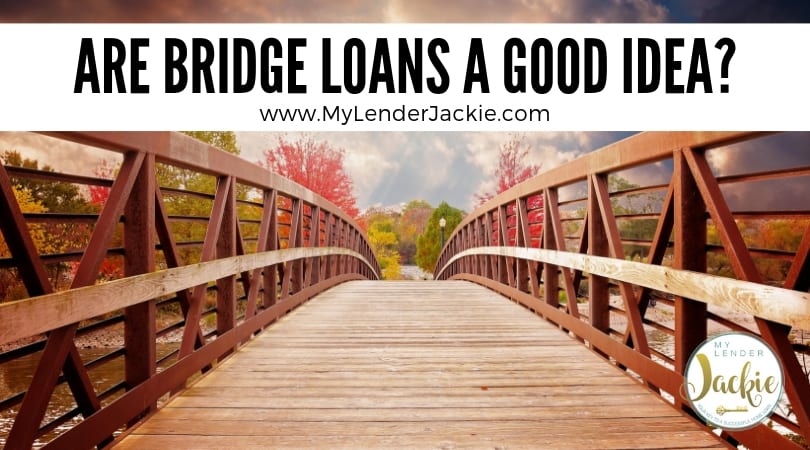
A bridge loan is a loan between two transactions, typically the buying of one house and the selling of another. A bridge loan is ideal when a homeowner cannot afford to mortgage payments at the same time. This works when you are buying one home when your previous home hasn’t sold yet, but you need it to sell in order to fund the new loan. They sound great, right? But are they a good idea?
These bridge loans are used to help pay for homes or buildings that have not sold even though you have already purchased or plan to purchase a new space. This loan may or may not be the best option but many people feel that bridge loans are automatically the best way to go, but they may fail to understand other options.
How a bridge loan works.
A borrower will typically get a bridge loan through a bank or mortgage lender and it can be structured in many different ways. Generally, the money will be used to pay off your old home’s mortgage but you might be required to make monthly payments on the bridge loan or pay upfront for back and, lump sum interest payments. Bridge loans may last only a couple of months or as long as a year. While this sounds good in theory, bridge loans are actually quite rare and tricky to get. Many lenders don’t even recommend them because people will use home equity lines of credit instead as the tool to get from one house to another. As housing markets get better, this product becomes more viable, because there’s a better chance the house will sell quickly and the bridge loan will be rolled into a traditional conventional or FHA loan.
Bridge loans can be more difficult to qualify for. The major risk is that when you’re buying a new home and selling an old one, you’ll need to understand the strength of financing sources of the person buying your own house. There are a lot of factors, many of which are out of your hands. If the person buying your house falls through, the bridge loan may also collapse. Last-minute financing on your buyer’s side could cause you to lose the house that you are buying.
Most bridge loans carry an interest rate of about 2% above the average fixed rate product and can last anywhere from six months to 12 months, plus they may have equally high closing costs. However, bridge loans can help drop homebuying contingencies when in a competitive market or if home sellers won’t agree to contingencies from the buyer. If your dream home comes along, a bridge loan might be the key to buying the home first and selling your home later, just as so long it’s not too much later.
Drawbacks to a bridge loan:
- Bridge loan rates are relatively higher than a traditional mortgage.
- Bridge loans are only intended to be kept for a short time.
- Interest rates can vary greatly depending on the attributes of the loan and the borrower qualifications.
- The higher the risk you present to the lender, the higher your rate will be.
- Higher bridge loans will also be harder to obtain.
- There is no guarantee that your existing home will sell within the timeframe.
- Be guarded against prepayment penalties and pay attention to all terms.
Bridge loans are a great idea in the perfect situation, but that’s not for everyone. The best thing you can do is to discuss your situation and your finances with your lender to determine the best route. A bridge loan may or may not work for your situation. Good communication between your real estate agent and your lender is key to getting the right home for you and selling your home in a timely manner. If you have questions, feel free to call or ask at any time.
